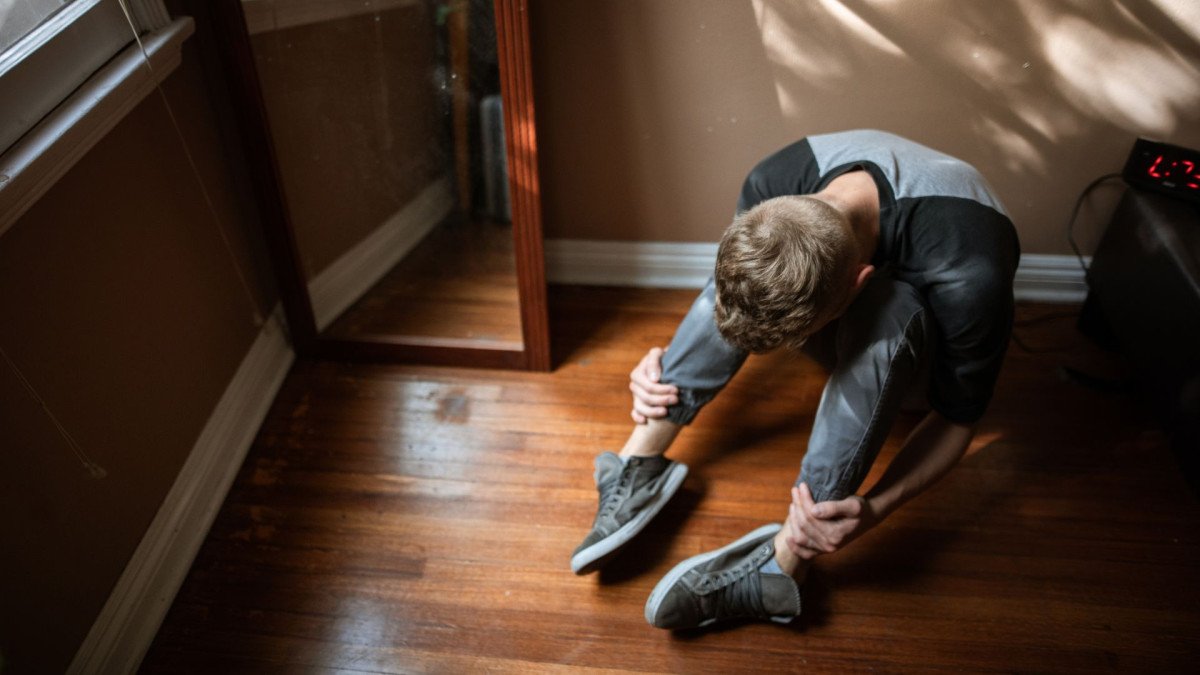We all know someone or have even experienced a traumatic event ourselves. Whether it is a car accident, a natural disaster, a trauma caused by another person, a fire or an assault, it has been more than studied that it leaves a mark on our brain In fact, post-traumatic stress disorder (PTSD) is linked to hyperactivity in those areas of the brain that process fear and, in turn, hypoactivity in the frontal areas responsible for decision-making, problem-solving, etc.
You may be wondering: What is Post Traumatic Stress Disorder (PTSD)? It is a mental health illness that appears after a terrifying situation, whether because you have experienced or witnessed it. Symptoms can begin within a month after exposure to the traumatic event, but it is curious that there are times when they do not appear until years later. The symptoms completely interfere with the daily life of the affected person as well as their interpersonal, romantic or work relationships.
It can be intuited that the range of emotions, feelings and reactions to a trauma is very wide since it depends a lot on the nature of the event, the age of the person, the amount of support the person receives after the incident, whether he or she has had some traumatic experience before and of course, their physical and mental health at the time. Thus, It is crucial not to judge or belittle behaviors that stem from trauma
In today’s article, based on scientific evidence, we will analyze the different reactions that can be had to a traumatic event. The most common can be grouped into a variety of psychological, emotional, physical and behavioral responses. We want to emphasize that they are completely normal reactions and, in most cases, they disappear as part of the natural recovery process. In those cases that last for years, that is when we could begin to talk about the PTSD discussed above.
What is a trauma?
Since we are going to mention trauma throughout the article, we would like to pause on what exactly trauma is. The word comes from Greek and means wound. That is to say, It is a lasting wound that can be caused because you have suffered intense fear or even because you have felt unable to adequately handle a danger As we mentioned before, not everyone follows the same line in terms of behavior after trauma and in fact, there are 3 different types of trauma that we should mention:
Can a person develop symptoms, experience the same sensations and carry out behavioral patterns similar to those people who have suffered a traumatic situation/event? The answer is yes and it is known as secondary or vicarious trauma. It occurs a lot in professionals in health care services, emergencies, social or civil protection and in general all those jobs that work daily with trauma, suffering, fragility and vulnerability.
We are referring to significant emotional exhaustion on the part of this group of people. Traumatic events can be isolated events, or continuous or repeated However, there is an organization in the UK called Mind that lists the following potential causes of trauma:
Of course we want to make it clear that every traumatic experience is valid and has the right to be addressed with empathy and care. After all, any experience with a devastating force for the person, whether due to their values, ideologies, principles, or meaning of life, can trigger trauma.

Reactions to a traumatic event
Such is the variety in reactions to trauma that if 4 people went through the same event, all 4 may react in a completely different way. In other words, the same event is capable of causing trauma in some people and not in others.
1. Emotional reactions
The most common emotional reaction to trauma is fear and anxiety. It is completely normal to feel afraid when experiencing something terrifying and in fact, experts say that Fear after a trauma can be even worse than at the time of the trauma, and undeniably lasts longer You may feel that the fear is finally subsiding, but something triggers a reminder of the trauma and the intense fear returns. Fortunately, for most people the fear diminishes over time.
Feelings of anger may appear after a trauma. Anger towards the person who caused us the difficult moment or we even feel angry with ourselves for what has happened. It is also common to find ourselves more irritable than normal and have a hard time understanding why we are exploding with the people around us.
Crying and feeling sad is another emotional reaction. It is normal to feel overwhelmed by a world in which everything seems terribly threatening Furthermore, grief is totally common when we talk about traumas that involve the loss of someone close.
Blaming oneself for not having reacted differently or for certain actions we take is an emotional response to trauma. There are people who feel responsible for what has happened to them, as if they had somehow caused it.
Finally, feeling emotionally turned off, as if we do not have positive emotions and we feel that everything is going slower. It is part of the numbing process that certain people suffer from living a difficult experience, which after all, is part of the defense mechanisms that our brain and body use.
2. Physical reactions
Upset stomach and problems eating Problems sleeping and feeling very tired. Palpitating heart, rapid breathing, sweating, muscle tension, fatigue, constantly feeling nervous, among many others.
3. Freezing reaction
It is a way of reacting that our brain chooses in situations of extreme threat. We assume that we cannot do anything, that we cannot escape, and consequently, we do not find strategies to defend ourselves from danger. It is as if fear paralyzes us and our body and mind are absolutely unable to react to the situation.
When a few hours or days pass, it is common for us to wonder why we reacted like that and how we didn’t do anything at the time This is a dangerous moment since negative feelings emerge such as guilt, anger, rage, sadness and even the shame that we mentioned previously.
4. Flight reaction
Another response to harm is to flee. Just as the word says, it means escaping from a situation. They are people who cannot stay still and use all their strength to avoid and escape from the situation.
5. Fight reaction
It is the attitude to fight and defend both yourself and the people around you They become violent, aggressive and ultimately seek to fight against what is happening to them.
6. Behavioral reactions
There may be changes in behavior after trauma. First of all, many people begin to not trust the people around them. When living through a terrifying experience, it is difficult to know who we can trust and who we can’t. We may begin to suspect everyone because, if one person could hurt me, why couldn’t this other?
Constantly observing our surroundings for threats is common since these people do not want to be caught off guard by pain again Therefore, they are in a state of constant hypervigilance that prevents them from leading a full life. They feel on edge all the time.
Social isolation, work isolation, love isolation, irritability, insomnia are other clear examples of behavioral reactions to a traumatic event.
Conclusions
If you have identified with the article and have recently gone through a traumatic event, we advise you to talk to someone you trust in your environment to whom you can tell your experiences, reactions, emotions and thoughts. Of course, if you feel like the situation is getting the best of you, see a professional so you can get back to a satisfying and fulfilling life.
Furthermore, if someone close to you has recently gone through a terrifying moment, we advise you to offer your support or recommend that they go to psychological therapy Remember that in the worst moments of our lives, the unconditional support of others saves us.










